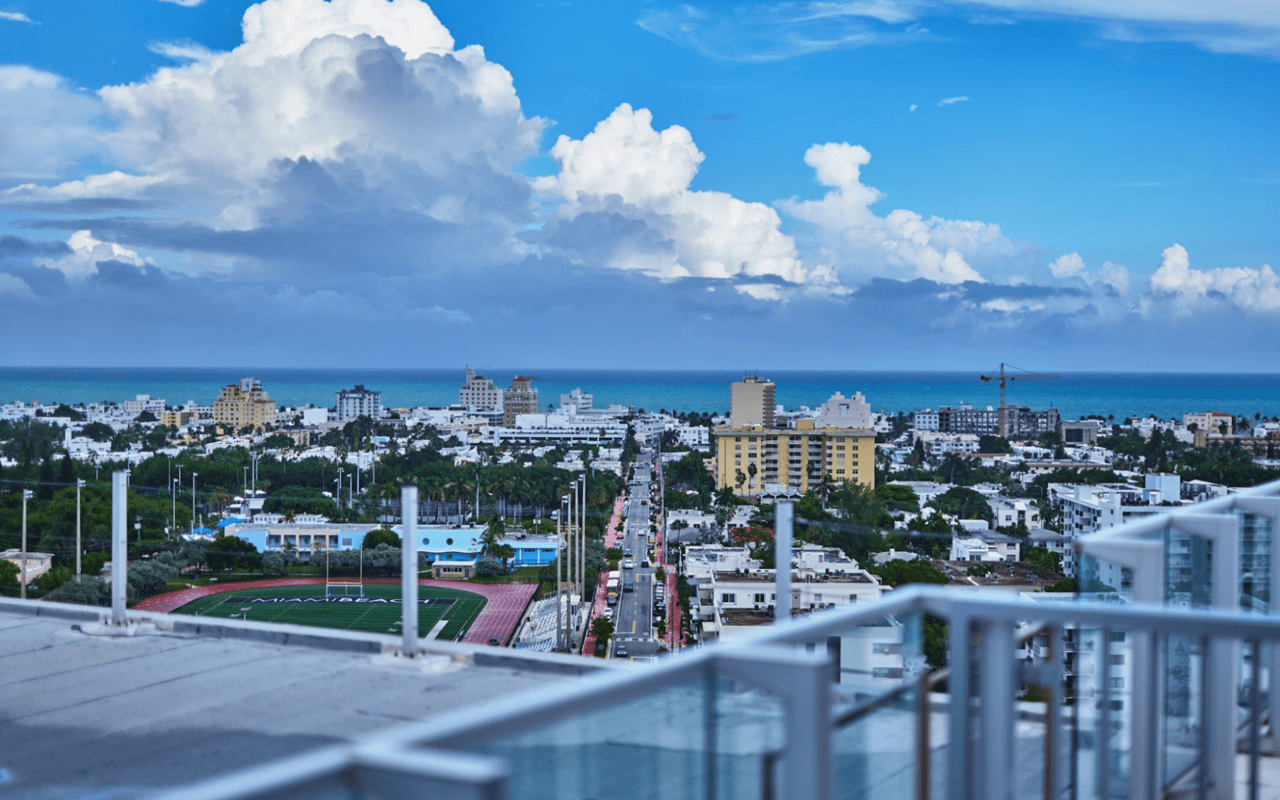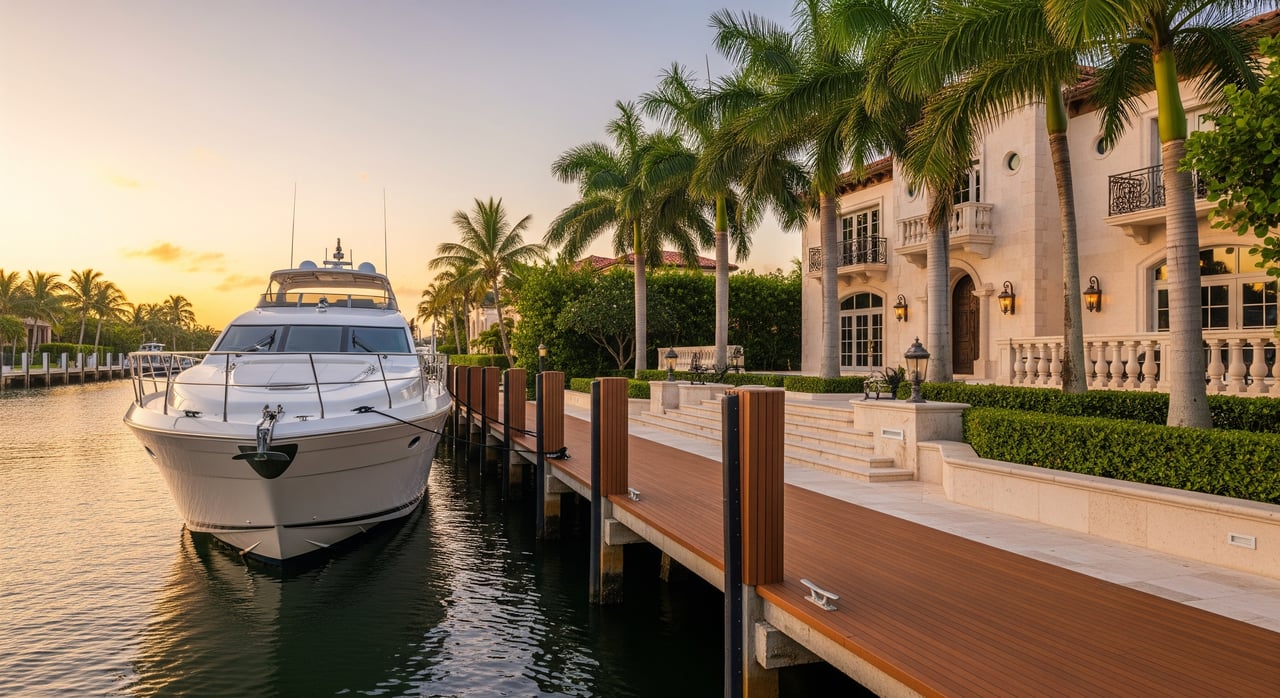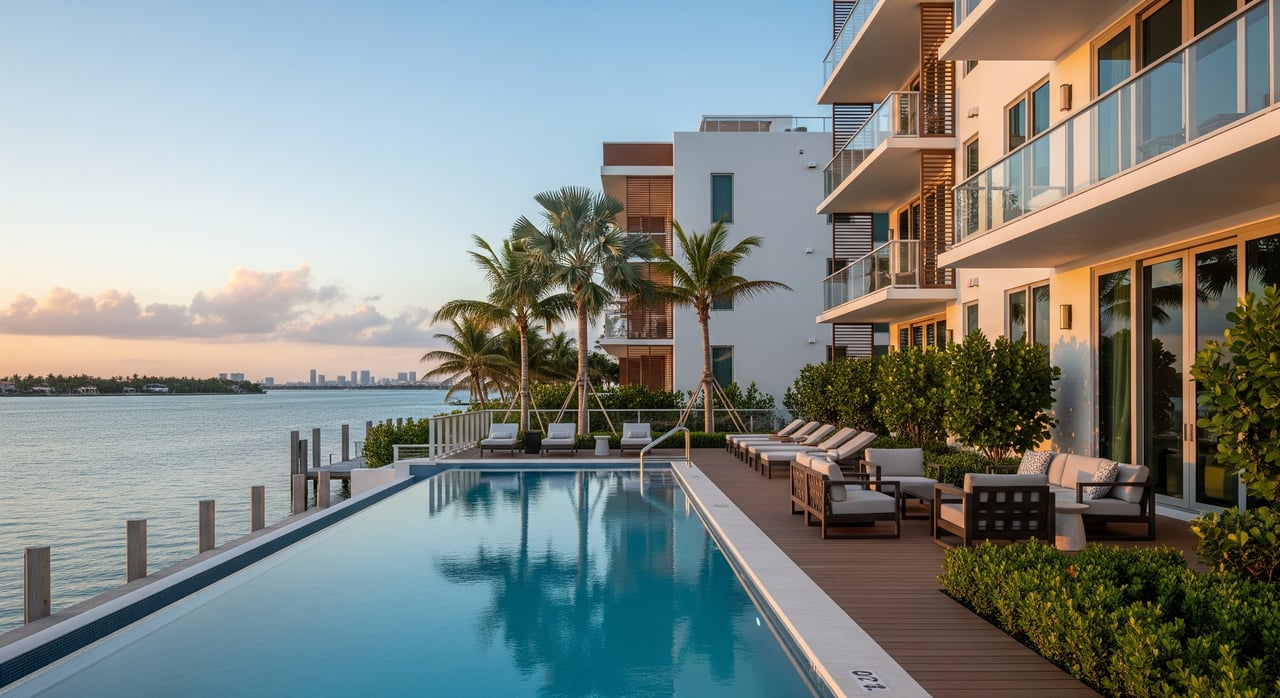Miami Beach is a vibrant city known for its stunning architecture. This article highlights some of the key architectural landmarks that define Miami Beach.
The Fontainebleau Miami Beach
The Fontainebleau Miami Beach is an iconic hotel designed by architect Morris Lapidus. Opened in 1954, this luxurious resort epitomizes Miami Modern architecture, known as MiMo. Its curved design and "Stairway to Nowhere" exemplify Lapidus' theatrical style. The hotel has hosted numerous celebrities and continues to be a significant symbol of Miami Beach's architectural and cultural landscape.
The Delano South Beach
The Delano South Beach, designed by architect Robert Swartburg and completed in 1947, is another prominent example of Miami Modern architecture. Known for its sleek, minimalist design, the Delano has been a trendsetter in the hospitality industry. The hotel's tall, white façade and the striking vertical sign are hallmarks of its timeless appeal. Its luxurious interiors and the iconic pool area continue to attract visitors from around the world.
The Art Deco Historic District
The Art Deco Historic District in Miami Beach is home to the largest concentration of Art Deco architecture in the world. This area features over 800 buildings constructed between 1923 and 1943. The district's pastel-colored buildings, porthole windows, and neon signs capture the essence of the 1930s and 1940s. Walking through this district offers a glimpse into the city's rich architectural history and its evolution over the decades.
The Miami Beach Convention Center
The Miami Beach Convention Center, originally opened in 1958, underwent a significant renovation completed in 2018. The modernized facility, designed by Fentress Architects and Arquitectonica, combines functional design with aesthetic appeal. The center's sleek, wave-like façade and spacious interiors make it a versatile venue for various events, contributing to Miami Beach's status as a major destination for conventions and exhibitions.
The New World Center
The New World Center, designed by renowned architect Frank Gehry, opened in 2011 and serves as the home of the New World Symphony. This state-of-the-art concert hall features Gehry's signature deconstructivist style, with flowing lines and innovative use of space. The building's exterior is complemented by an adjacent public park, which hosts Wallcast concerts, allowing visitors to enjoy performances in an open-air setting. The New World Center represents the fusion of art, architecture, and community engagement.
The Bass Museum of Art
The Bass Museum of Art, housed in a 1930s Art Deco building designed by Russell Pancoast, is a significant cultural landmark in Miami Beach. The museum underwent an expansion in 2017, led by architects Arata Isozaki and David Gauld, which added contemporary gallery spaces while preserving the historic façade. The Bass Museum's blend of old and new architecture provides a dynamic setting for its diverse collection of contemporary art.
The Villa Casa Casuarina
The Villa Casa Casuarina, formerly known as the Versace Mansion, is a luxurious property located on Ocean Drive. Built in 1930, the mansion was designed by architect Alden Freeman in a Mediterranean Revival style. The opulent property gained fame as the residence of fashion designer Gianni Versace, who extensively renovated and expanded the mansion in the 1990s. Today, it operates as a boutique hotel, offering a glimpse into the lavish lifestyle of its former owner.
The Wolfsonian-FIU
The Wolfsonian-FIU is a museum and research center housed in a 1927 Mediterranean Revival building designed by Robertson and Patterson. The museum's extensive collection focuses on art and design from the late 19th to the mid-20th centuries, providing insights into the era's social, political, and technological changes. The Wolfsonian's historic building, ornate detailing, and grand interiors add to the museum's charm and educational value.
The Lincoln Theatre
The Lincoln Theatre, originally opened as a movie palace in 1936, is a notable example of Streamline Moderne architecture. Designed by architect Thomas W. Lamb, the theater features sleek curves, horizontal lines, and a distinctive marquee. After serving as a cinema for decades, the building was transformed into a retail space and now houses a high-end fashion boutique. Despite the change in function, the Lincoln Theatre remains an architectural gem on Lincoln Road.
The Betsy Hotel
The Betsy Hotel, a Georgian Revival-style building designed by L. Murray Dixon and opened in 1942, stands out among the predominantly Art Deco architecture of Ocean Drive. The hotel's elegant, colonial-inspired façade, complete with columns and shuttered windows, contrasts the surrounding buildings. The Betsy's commitment to art and culture is reflected in its extensive art collection and support for local artists, making it a cultural landmark in Miami Beach.
About The Julian Johnston Team
Originally from Adelaide, Australia, Julian Johnston has lived in Miami Beach for two decades. He excels in representing top-tier real estate throughout South Florida, from luxurious vacation homes with breathtaking views of Biscayne Bay to sleek, contemporary condos in Miami's most sought-after neighborhoods. Julian is esteemed for his unwavering integrity and confidentiality, frequently extending his expertise beyond transactions to offer guidance on renovations and new development initiatives.
If you're looking to buy or sell a home or have any questions about the Miami Beach real estate market, contact The Julian Johnston Team today.
If you're looking to buy or sell a home or have any questions about the Miami Beach real estate market, contact The Julian Johnston Team today.




